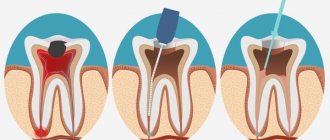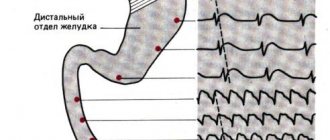Most methods of combating excess weight are based on restricting diet and increasing physical activity. But in severe cases of obesity, gastric resection may be prescribed. This is a radical measure that is carried out in exceptional cases and has a number of nuances.
The information presented here is of interest from a purely educational point of view. It cannot be used to decide whether a particular case requires resection or not. Only a doctor can determine this.
What is gastric resection, the essence of the operation
Gastric resection was initially used only to treat certain diseases of the gastrointestinal tract. It involves partial cutting off or complete removal of the stomach. This can be longitudinal removal or using the Balfour method. After such an operation, the functionality of the gastrointestinal tract is restored. Not so long ago, this kind of intervention was used only when all other methods of treatment had been exhausted and the person was in danger of dying. But recently, resection has been prescribed for the treatment of terminal obesity.
As a result of the operation, half, a third or a quarter of the stomach may be removed. Sometimes subtotal resection is used, in which 80% of the organ is removed. The size of the removed part depends on the level of obesity. After rehabilitation, a person adapts to living with a reduced stomach. It takes less food to fill it, so the portions become noticeably smaller. As a result, the number of calories consumed is reduced, and the patient begins to lose weight.
But that is not all. It is very important to eat right after surgery. You need a balanced, well-thought-out diet. If you improve your diet, your weight will gradually become satisfactory.
Meaning of the word resection
Examples of the use of the word resection in the literature.
Okay,” he said, “tomorrow you will assist me on a gastric resection, and the new technique is on your conscience.”
Amid the light and sympathetic laughter of the doctors in the hall, Nikolai Evgenievich slightly, cleverly and cunningly, without offending anyone, and even with curtseys, went over some instructions, and in particular about the instructions stipulating the urgent need to amputate the leg when resection of the femur is above seven centimeters.
Ordinary zemstvo doctors decide to perform resection of the knee joint; for every hundred cuttings there is only one death, and stone disease is considered such a trifle that they don’t even write about it.
In addition, it occurs in patients with chronic diseases of the abdominal organs - gastritis, enterocolitis, pancreatitis, peptic ulcer and cholelithiasis, after gastrectomy, as well as in diseases not related to the gastrointestinal tract: various infectious diseases, collagenoses.
Surgical treatment: suturing the perforation, resection of the damaged area, removing the perforation onto the anterior abdominal wall.
Vaudeville with Wolves, Termite's Attitude, Secrets of Siamese Foxes, Spoiled Megaphone, Numb in the Hillock, Resection of Letters, Quantum Lyrics, Career of a Performing Reptile, Fingerprinting of Reptiles.
Vascular: with primary pulmonary hypertension, pulmonary arteritis, lung resection.
After gastrectomy, I had to operate on an orthopedic patient, and sterile instruments were already waiting for me on a separate table.
Surgical treatment depends on the indications: from suturing the perforation to gastric resection.
At the age of 32, he had already undergone partial resection of his upper lip due to scaly carcinoma.
Once, after a gastric resection operation, I pestered Boris Mikhailovich, accusing him of being a routinist.
After the operation, after resection of the stomach, he threw the disabled poet Vasyl Stus into the punishment cell for the maximum period according to the regulations, for 15 days.
The drug was administered intramuscularly, since we were concerned about the absorption capacity of the gastrointestinal system, which was significantly damaged as a result of resection of part of the stomach and the development of a cancerous tumor.
If, as is commonly stated, one group of muscles was too short and needed cutting, and the opposite group of muscles was too long and needed resection, then temporary correction of strabismus could never occur.
And Doctor Sinyakov, barely able to stand on his feet, pale, barefoot, and ragged, performed a gastric resection.
Source: Maxim Moshkov library
Benefits of the procedure
Distal gastrectomy allows you to achieve truly impressive results. In just six months or a year after it, people lose from 50 to 90% of excess weight. The rehabilitation course is very short, patients quickly return to normal life, since minimal incisions are made during the operation, and the scars are very small.
During the resection process, only the stomach is affected. The remaining organs of the gastrointestinal tract continue to work. The operation is performed once. Repeated interventions or corrective procedures are usually not required. The remaining part of the stomach will forever retain its new size, so satiety will occur with less food consumption.
Flaws
This operation has its negative consequences. For example, after excision the stomach has reduced peristalsis; a person with a reduced organ may face the problem of intestinal obstruction. When a staple seam is performed incorrectly, inflammatory and infectious processes sometimes occur. Therefore, it is very important to be observed by a doctor during the postoperative period.
Gastric truncation is an irreversible procedure. Having made a resection once, it is no longer possible to return the organ to its original state. Sometimes a hernia forms at the sites of micro-incisions and sutures.
The first six months after surgery undergoes a process of adaptation of the body. During this time, such phenomena as constipation, diarrhea, and flatulence are common. There are side effects that do not go away even after the end of the adaptation period - heartburn, spleen diseases, stomach bleeding, inflammation of the abdominal cavity. If you look at the reviews, you can see that all sorts of complications of this kind are not uncommon.
Among other things, the passage of solid food with an excised stomach will be difficult. The first time after the procedure, abdominal pain appears when eating solid food. Over time, the pain goes away, but mild discomfort may remain.
Postoperative period
In the postoperative period, the patient begins to understand how difficult it is to live after gastric resection. The wound on the abdominal wall is a burden, but every day it becomes less and more worrying because of the drainage left in the wound and the intestinal tube installed through the patient’s nose.
Drainage in the wound is required to control the condition of the abdominal cavity, where fluid can accumulate and blood will appear if bleeding occurs. Through drainage, the consistency of the gastrointestinal connection - anastomosis - is determined. The drainage is removed when the damaged tissue inside the abdominal cavity has healed safely.
With a significant decrease in the contractile activity of the intestine, intubation helps to free the intestinal tube from gases and, if necessary, from the resulting liquid; the probe is removed by the end of the week, when the function of the gastrointestinal anastomosis is improved and intestinal motility is restored.
Comparison of the method with other methods of stomach reduction
There are several other surgical methods to reduce the absorptive surface of the stomach. Each of them has its own characteristics and is prescribed for certain indications.
Ballooning
With this technique, a silicone bladder is inserted into the stomach, which is then filled with saline solution. Being inside the stomach, the bubble creates a feeling of fullness, as a result of which a person eats much less. After it is performed, the patient can immediately go home, and after resection, he must spend at least 3 days in the hospital. But ballooning ensures a loss of only 40% of excess weight, and resection – from 50 to 90.
Ballooning is a fairly simple medical procedure that does not involve surgery. During the first days after the procedure, nausea and vomiting are possible. But these complications are not nearly as serious as the possible consequences after organ truncation surgery.
After 6 months, the balloon should be removed. During this time, a person, theoretically, should get used to small portions. But if he resumes his previous eating habits, the weight will increase again. Another nuance is that sometimes the balloons burst right inside the stomach. This can happen without a person noticing. Therefore, the saline solution with which it is filled is colored blue. If the balloon suddenly bursts, the saline solution will turn the urine blue, and the patient will see this the first time he urinates. Blue urine for people with ballooning is a signal to urgently go to the doctor and remove the balloon.
Bandaging
This procedure involves placing a bandage – a silicone ring – on the stomach. The ring compresses the stomach, dividing it into two parts. At the site of compression, a gap as thick as the esophagus is left. The upper part of the stomach turns out to be very small. Food goes into it first. It fills quickly and signals that saturation has occurred. Then gradually the food moves to the lower part of the stomach, and then to the small intestine.
After the bandage, the person spends one day in the hospital. The procedure allows you to lose up to 50% of excess weight. Banding is performed using a minimally invasive method, which is much easier for the patient than a full-fledged surgical intervention such as resection. Complications with banding are the same as in other cases when a foreign body is placed inside.
Gastroplication
This is a method in which the stomach is folded in its expanded part and sutured in a special way, after which it takes the shape of a tube. It is performed laparoscopically, without organ incisions. Provides loss from 35 to 50% of excess weight. After the procedure, you may have problems eating. Long-term results have not yet been studied, as the technique has only recently become widely used.
Bypass surgery
During bypass surgery, a small part of the stomach is separated from the main one and connected to the small intestine in a bypass. After the procedure, the capacity of the working part of the stomach is reduced, and the degree of absorption of nutrients decreases. Bypass surgery is an even more complex surgical operation than resection. After it, patients remain under the supervision of doctors even longer.
The result of bypass surgery is a loss of 70 to 80% of excess weight. But quite serious complications can arise in the form of insufficient absorption of microelements and vitamins. Vomiting and nausea often occur.
In this case, the weight comes off within a year or two. After this, the person’s condition stabilizes, and if one does not return to harmful eating habits, the slim figure is maintained. If necessary, you can restore the original shape of the stomach.
Why is gastrectomy necessary?
First of all, an operation to remove an unhealthy part of an organ is performed for cancer; in oncology, all main types of resections are used, and for early carcinoma in situ - stage 0, innovative endoscopic resection of the mucous membrane is practiced without dissecting the entire thickness of the gastric wall. Main indications for resection:
- Malignant organ damage and benign processes, including polyps of the mucous membrane;
- A long-term and non-healing callous ulcerative lesion of the gastric mucosa with life-threatening complications: bleeding, a hole penetrating through the entire thickness of the wall - perforation, including an omentum covered from the outside - penetration.
- Severe obesity, resistant to all other treatment methods.
The list of contraindications is long, but these are mainly diseases of a “general nature”: chronic diseases in the stage of decompensation, not excluding mental disorders, when it is problematic to undergo any surgical intervention.
Acute inflammatory processes and infections may delay surgery for a while.
Everything is determined by the need; of course, it is dangerous to perform a gastric resection, but there are clinical situations when it is dangerous not to perform the operation. It is important to be in good hands and in a clinic where they understand when and what the patient needs to do in order to preserve life and health, as the specialists of our clinic understand.
Indications for resection
Gastric resection is indicated for complex obesity, which is accompanied by severe pathologies:
- metabolic syndrome;
- apnea (short-term cessation of breathing during sleep);
- pulmonary or heart failure;
- joint diseases;
- phlebeurysm;
- hypertension;
- infertility;
- diabetes.
The appointment is made taking into account the fact that excess weight has already led to concomitant diseases, and can further aggravate the person’s condition, as well as the fact that the person himself is no longer able to get rid of obesity in more natural ways. It is also clarified that the procedure allows you to remove no more than 50 kilograms.
Contraindications to gastric resection
It is immediately worth noting that obese people, as a rule, have a whole bunch of diseases, and some of them are a contraindication to resection. Therefore, patients who are ready to go under the surgeon’s knife and pay a lot of money for it are often denied the operation.
Contraindications:
- autoimmune connective tissue diseases;
- taking hormonal steroid drugs on a regular basis;
- age under 18 years;
- alcoholism;
- kidney diseases;
- psychical deviations;
- chronic gastrointestinal diseases;
- ascites.
The procedure cannot be performed if there are inflammatory processes in any organs. Among other things, the anesthesiologist must give permission for the operation, since it is performed under general anesthesia. Therefore, one should also take into account contraindications to anesthesia, and this is a whole range of cardiovascular, pulmonary and other diseases that often affect obese people.
What is resection?
Sometimes in urological practice, when a disease occurs, pathologies occur that cannot be cured with a conservative method. In this case, the only way out of this situation is surgical intervention. But despite this, doctors still try to eliminate the disease with the least negative consequences for the patient. Kidney resection is one of these operations when not the entire kidney along with the tumor is removed, but only the damaged part.
Kidney resection is an operation in which part of an organ is removed along with a tumor.
From all of the above, we learned what kidney resection is. Now let's look at what it is like. In medical practice, renal resection is performed only under general anesthesia and is performed in two ways:
- open;
- extracorporeal;
- laparoscopic.
These two approaches differ significantly from each other. The open method is chosen only if the patient is diagnosed with an anomaly of internal organs or obesity, and also if the surgeon believes that for some reason he needs visual control. The open method is highly traumatic, as well as a difficult and long-term recovery period.
The laparoscopic method is considered one of the safest and least traumatic. During this resection, general anesthesia is also used. This procedure takes about three hours, during which about 4 punctures are made on the patient’s abdominal wall and instruments and a camera are inserted through them. The whole process is controlled using a screen on which the image from the camera is displayed.
Extracorporeal resection is performed quite rarely, since during such an operation the risk of deterioration of the patient’s condition increases. Basically, this method is preferred in cases where large tumors are diagnosed. The peculiarity of this method is that during the operation the kidney on which the tumor is diagnosed is removed, and after the tumor is removed from it, it is returned to its place. During such an operation, special attention should be paid to caution, since in no case should the pelvis, large vessels, or ureter be touched.
After the operation, the recovery period lasts up to 1.5 years, the more precise period depends on the individual characteristics of the body.









